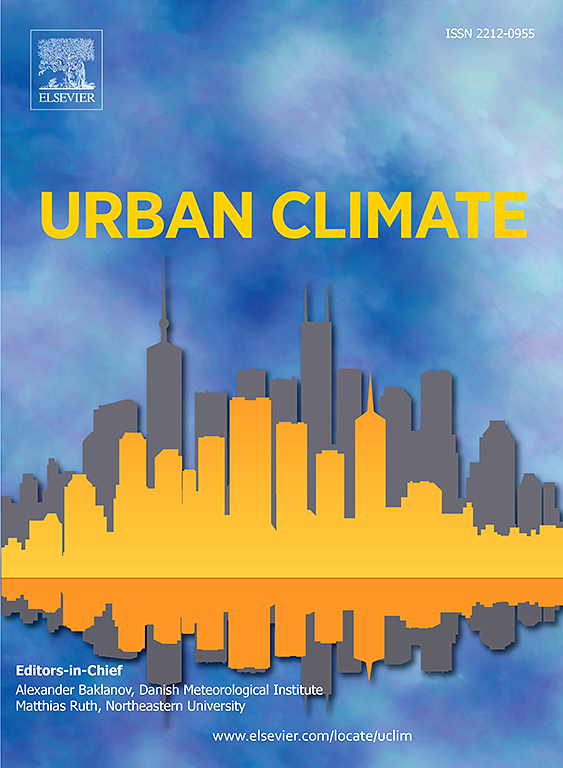Beyond land surface temperature: Identifying areas of daytime thermal discomfort in cities by combining remote sensing and field measurements
IF 6.9
2区 工程技术
Q1 ENVIRONMENTAL SCIENCES
引用次数: 0
Abstract
Satellite images of land surface temperatures (LST) are commonly used to identify areas within cities most prone to diurnal thermal discomfort, but they may not reflect the experiences of pedestrians. Here, we developed predictive statistical models for Physiological Equivalent Temperature (PET), an indicator of thermal discomfort, with easily accessible spatial predictors. For this, we measured PET (n = 4472) along eight transects (range: 700–5000 m) using a multi-sensor instrument in the urban fabric of Geneva, Switzerland during periods of summer heat. We parametrised generalised additive models (GAM) and linear mixed models (LMM) with six commonly available predictor variables [solar energy, Local Climate Zone (LCZ), albedo, LST, Normalized Difference Moisture Index (NDMI) and canopy cover]. We found that LST, alone, explained <2 % of observed variation in PET, whereas the GAM with all the 6 predictor variables had R2 = 0.43. LCZ and solar energy explained most of the variability of PET across the city. PET values were lower in the densely built city centre than in the peri-urban environment. LST is poorly correlated with air temperature and PET in urban settings, and thus should not be used alone to predict outdoor thermal discomfort.
超越地表温度:通过结合遥感和实地测量,确定城市白天热不适的区域
陆地表面温度(LST)的卫星图像通常用于识别城市中最容易产生日热不适的区域,但它们可能无法反映行人的体验。在这里,我们开发了生理等效温度(PET)的预测统计模型,PET是热不适的一个指标,具有易于获取的空间预测因子。为此,我们在瑞士日内瓦的城市结构中使用多传感器仪器在夏季炎热期间沿着8个横断面(范围:700-5000米)测量PET (n = 4472)。我们对广义加性模型(GAM)和线性混合模型(LMM)进行了参数化,其中包括6个常用的预测变量[太阳能、局地气候区(LCZ)、反照率、地表温度、归一化差分湿度指数(NDMI)和冠层覆盖度]。我们发现,LST单独解释了PET观察到的2%的变化,而GAM与所有6个预测变量的R2 = 0.43。LCZ和太阳能解释了全市PET的大部分变化。在人口密集的城市中心,PET值低于城市周边环境。在城市环境中,地表温度与空气温度和PET相关性较差,因此不应单独用于预测室外热不适。
本文章由计算机程序翻译,如有差异,请以英文原文为准。
求助全文
约1分钟内获得全文
求助全文
来源期刊

Urban Climate
Social Sciences-Urban Studies
CiteScore
9.70
自引率
9.40%
发文量
286
期刊介绍:
Urban Climate serves the scientific and decision making communities with the publication of research on theory, science and applications relevant to understanding urban climatic conditions and change in relation to their geography and to demographic, socioeconomic, institutional, technological and environmental dynamics and global change. Targeted towards both disciplinary and interdisciplinary audiences, this journal publishes original research papers, comprehensive review articles, book reviews, and short communications on topics including, but not limited to, the following:
Urban meteorology and climate[...]
Urban environmental pollution[...]
Adaptation to global change[...]
Urban economic and social issues[...]
Research Approaches[...]
 求助内容:
求助内容: 应助结果提醒方式:
应助结果提醒方式:


